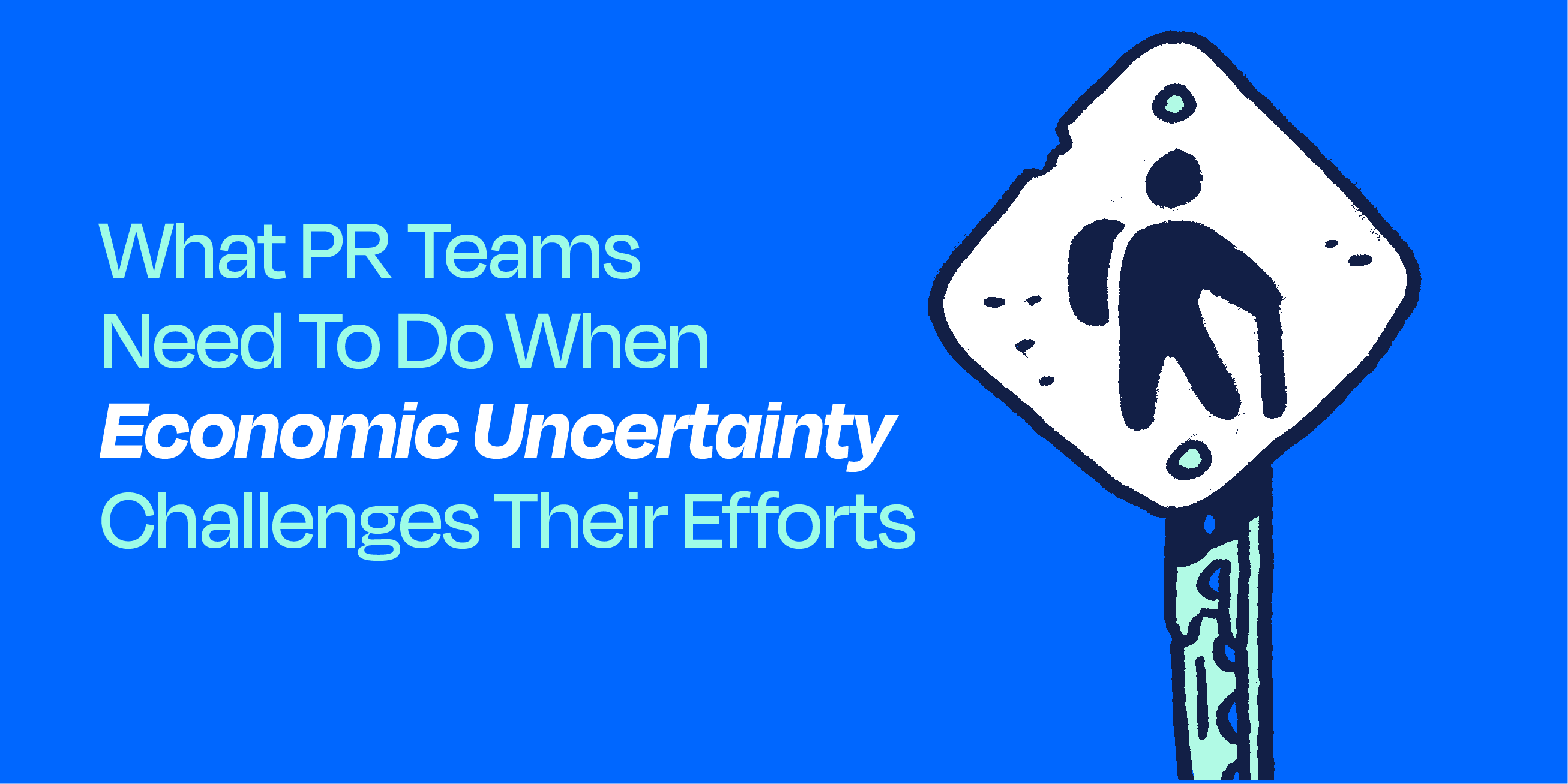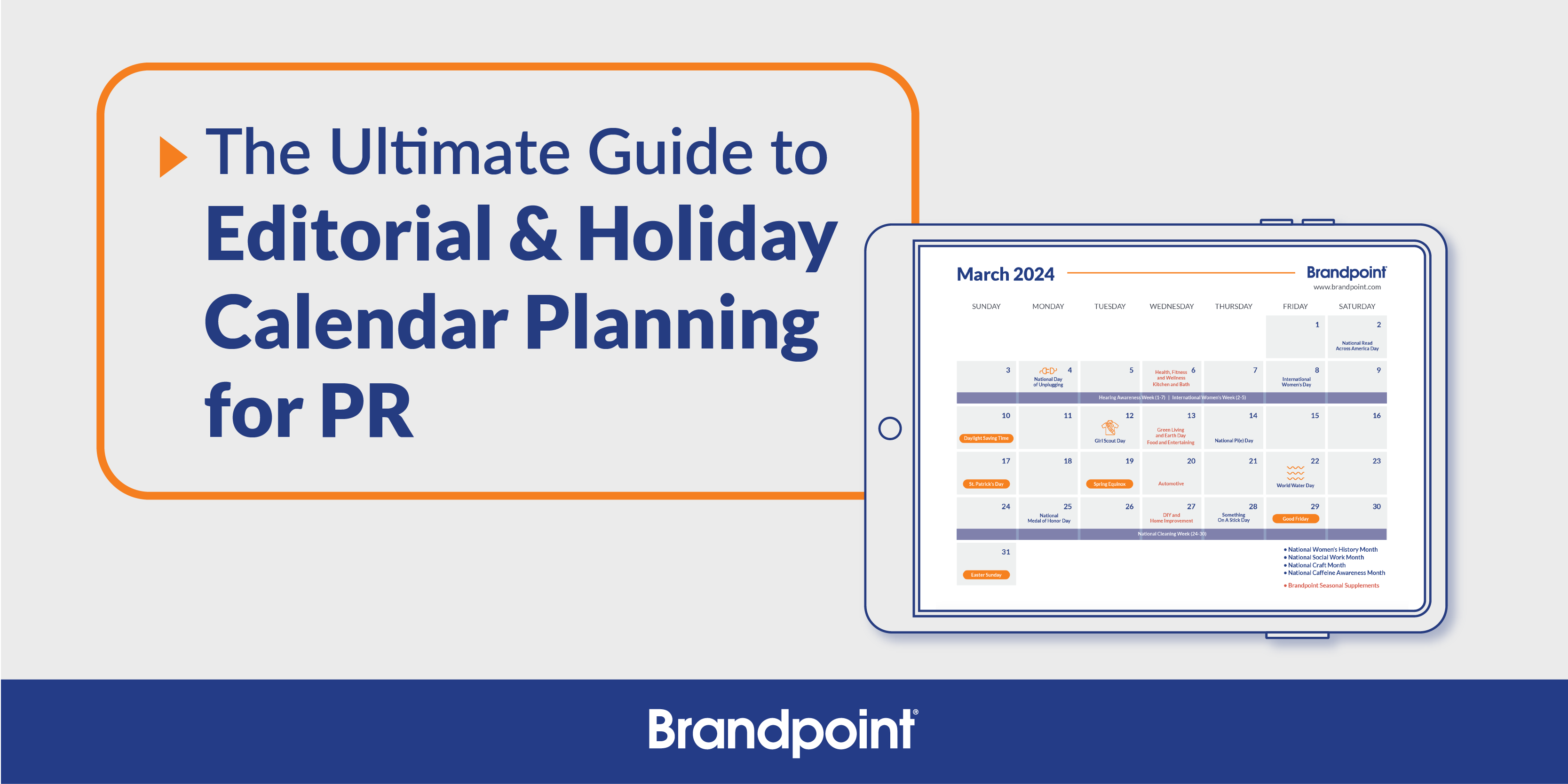You’ve written the perfect script, targeted your audience and decided the message you want to share with them, filmed take after take, and now, after hours of editing, you finally find yourself with a perfectly crafted video.
So, now what?
Creating branded content, like branded videos is a huge element to any branded content marketing strategy, but knowing what to do with this piece of content when it’s ready to go live is just as crucial. However, it can seem like a puzzle when you’re deciding where to start. What is most important? What next steps take priority over others?
Distributing your content through the lens of the PESO model™ is the way to do it — by planning your campaigns this way, you’ll know what you should do first, and how each tactic can work with the rest. But first, some definitions.
What is Branded Video Content?
Branded video content, a type branded content, is not a commercial, not entertainment, but something in between. This visual form of sponsored content has two main purposes — one, to provide genuinely helpful and compelling content, and two, to send a message of what your brand is.
What is PESO™?
The PESO model™ stands for Paid, Earned, Shared and Owned Media and was coined by Gini Dietrich in the book Spin Sucks. In our introductory post about this strategy, we detail what each portion of the model entails and how it all works together. In short, the PESO model™ is a structure to follow when forming your media strategies to ensure you have a holistic, fully-formed plan that involves all media types. The PESO™ marketing is similar to a form of integrated digital marketing.
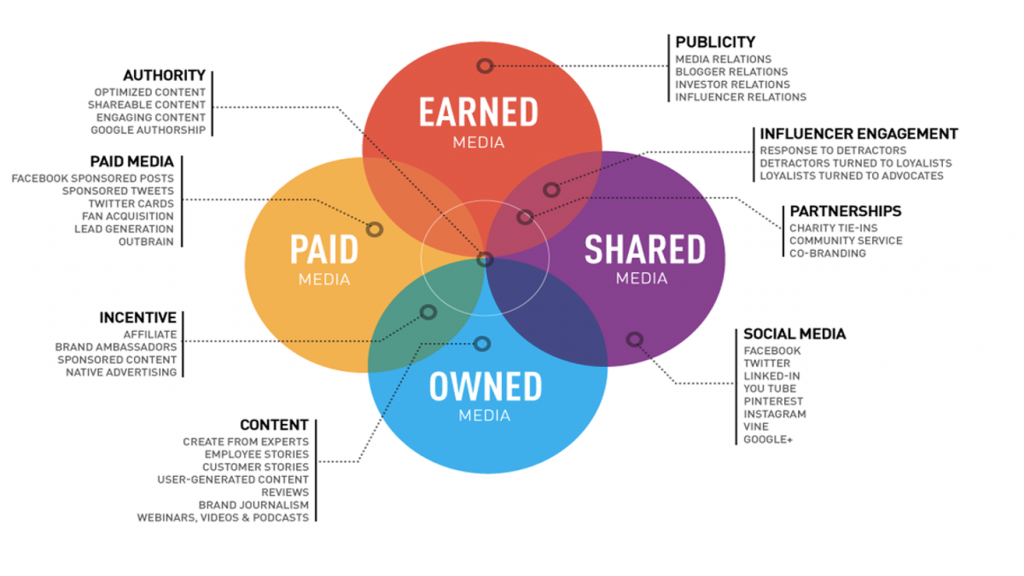
Source: Spin Sucks
In this post, I’ll cover how your branded videos can be shared within all four segments of the PESO™ model and offer specific examples of what that looks like.
Owned Media
While not listed first in the acronym, owned media is where it should all begin. Owned media channels includes all content placement that marketers have control over. Before you begin any distribution process for your newly created video, it needs to have a home on your own channels first.
Publish on your website
This first step is a straight-forward one. If you’ve created a piece of content, chances are you’ll want it to live somewhere on your website.
- Blog: Including video in your blog posts is one way to create high-quality and comprehensive content. A variety of assets is key to keep readers entertained and educated while reading your articles.
- About us: If your video focuses on aspects of your company culture, history or vision, it would be perfect for your About or Careers landing pages. Live-action video with testimonials from your employees or clients is an effective method to humanize your brand and get your message across.
- Product pages: Does your video talk about a product or service you’re offering? Explainer videos, case studies and tutorials can be featured directly on product pages to move your leads further down the sales funnel. In the example below, outdoor clothing brand Patagonia includes a brief video on the product page for this raincoat that goes over key features. It’s effective, to the point and gives shoppers info they might need to make their purchase decision.
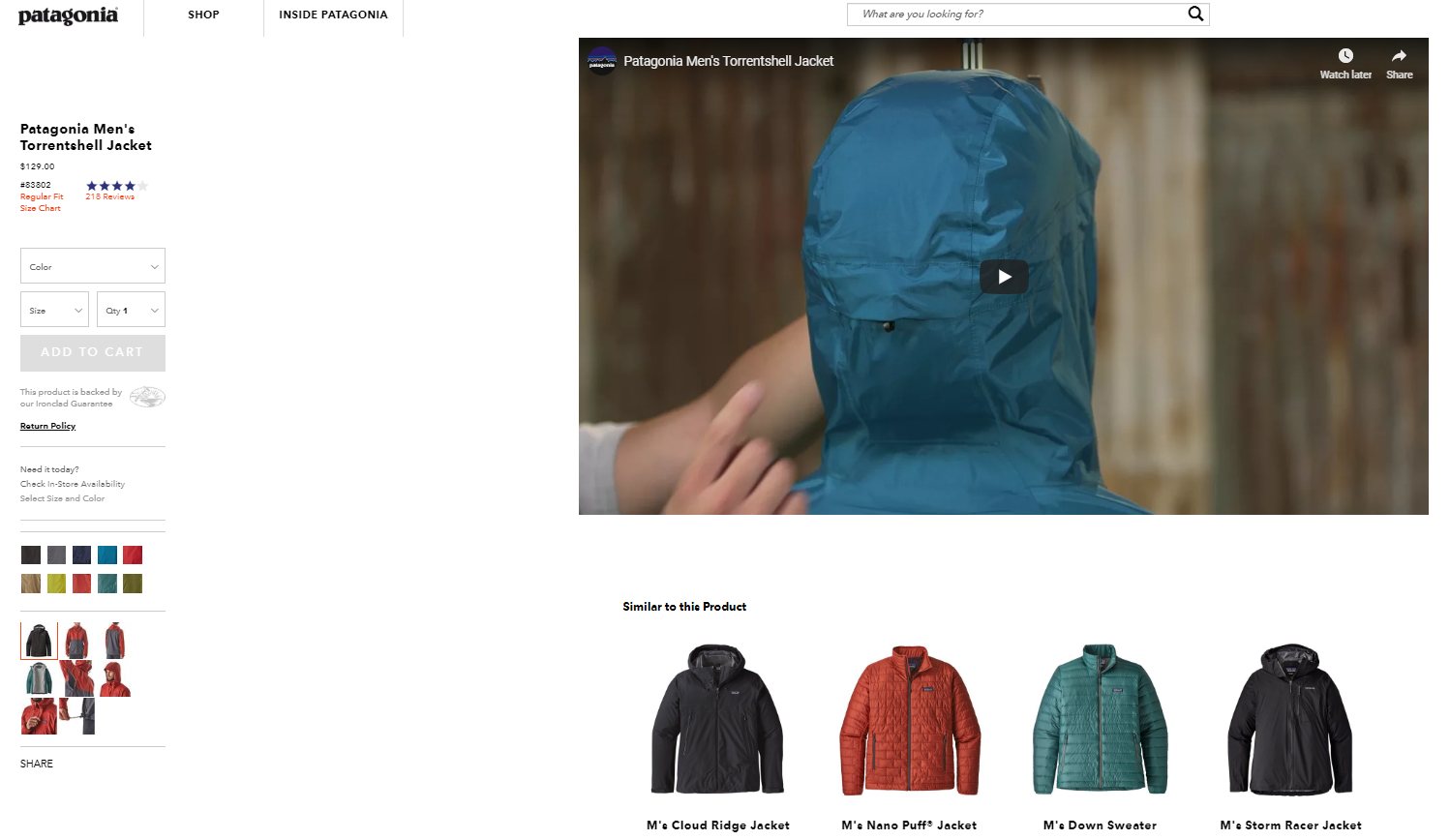
Source: Patagonia
Include in email campaigns
Using the word “video” in your email subject lines boosts open rates by 19%, which honestly is a lot when we’re talking email marketing. Adding a video to your email strategy can help with so many things, from personalization within the messaging to streamlining the communication process for your readers to even just saying thank you after a purchase is made.
Shared Media
Shared media is a simple concept in PESO™, but can be incredibly valuable for all types of brands. This segment of the media strategy is a subset of owned media, since you own the content you publish on your social media channels, but it becomes shared when you start seeing engagement from your readers.
Organic social media
Utilizing organic social media techniques is a great way to encourage shared media traction for your video content. A few things to keep in mind when posting your videos to social:
- Always be mindful of your audiences: If your LinkedIn is known for thought leadership within your field, maybe a video showing your company foosball tournament isn’t the best idea. On the flip side, if your Facebook is followed by mainly employees and their families, a bottom-of-the-funnel video on the nitty-gritty of your industry wouldn’t make the most sense. Be strategic of what content you’re putting where.
- Maintain common messaging between all channels: When your video is part of one specific campaign, the reader should be able to follow a single story throughout all your platforms. Use the same terminology and phrases on your social media as you do on your website, email and other publications.
Social shares & online word-of-mouth
As mentioned in our first post about PESO™, content that you post on your own social channels is owned, but “what happens next is out of your hands.” Meaning, you put the content out there, but your readers will determine if it’s successful.
Obviously, every brand hopes their content goes viral, but creating content with that as the end goal is not a great idea. Instead, your goal for shared media should be to encourage engagement, communication and online word-of-mouth for your brand. If the video goes viral, that’s just icing on the cake.
In this example from Hootsuite, a social media management platform, their recorded video of a LinkedIn Live broadcast garnered over 200 comments! They were able to meet their viewers where they were (LinkedIn, specifically) and gave them the type of content they were looking for on that platform.
Paid Media
Utilizing different paid media tactics is one of the most effective and powerful methods to gain an audience for your branded videos. While setting up your paid media campaigns, you’re able to target demographics to make sure that your video is being played in front of exactly the right people. Here are a few examples of sponsored content opportunities, as well as native advertising tactics:
Sponsored content
Sponsored content comes in many forms and we are constantly innovating and working to provide new options for our partners. The traditional MAT Release is a great option for distributing your content. Brandpoint can help you create a branded article, listicle, video or infographic that we can then distribute, or we can use a piece of content that you already had on hand and distribute that to our publisher network. This type of campaign will see results like placements, audience reach and other metrics – and we never use a multiplier.
- Listicles: Some of the most effective examples of sponsored content are articles or videos that blur entertainment with advertising. Buzzfeed, the internet’s leader in clickable content, creates tons of videos every day, including on Tasty, their food-related channel. This list-themed video below looks exactly like a normal Tasty video, but features Maggi products, along with a link to the brand underneath the video’s title. Clearly, this video is promoting Maggi, but it also still provides actual recipes for the viewer. [Read More: 5 Reasons Listicles – And Why Every Brand Should Use This Tactic]
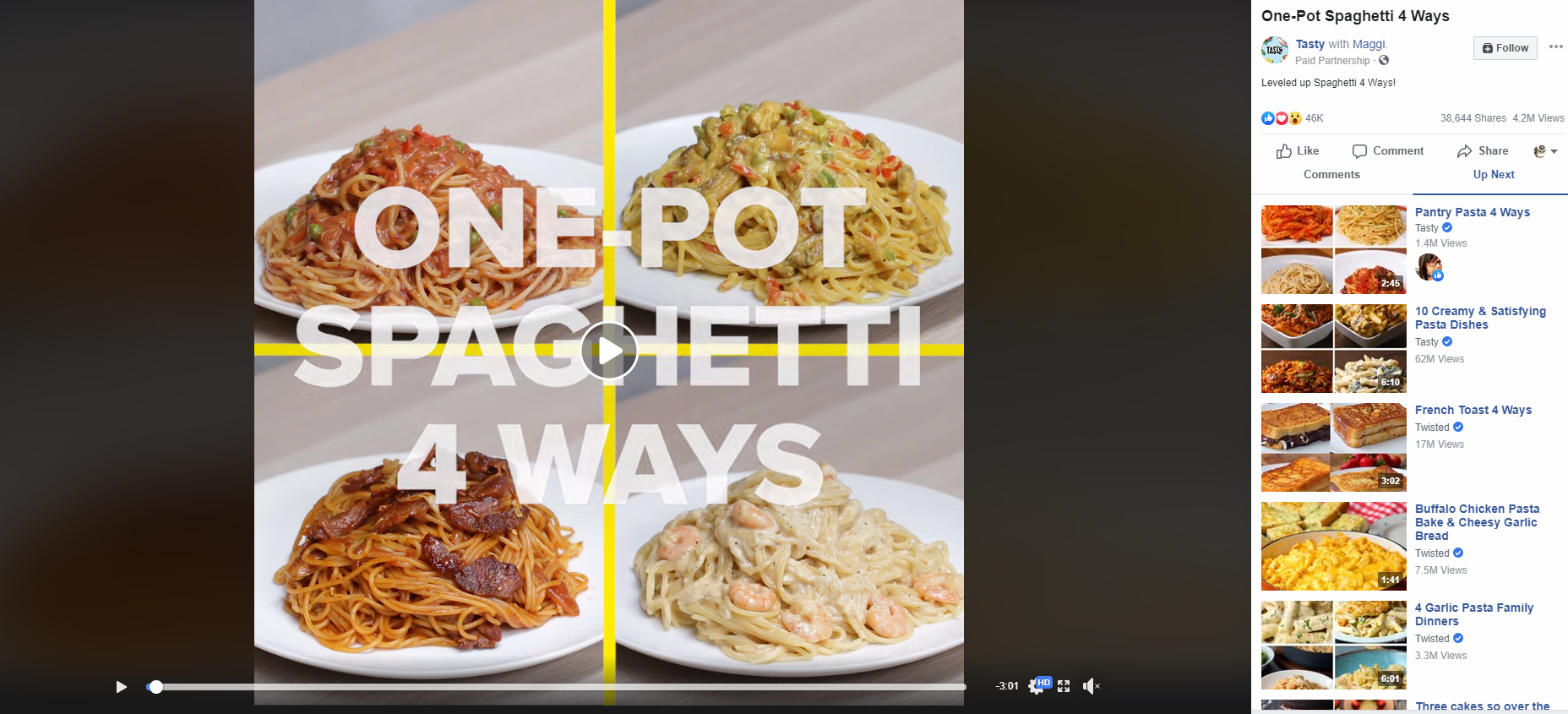
- MAT releases: One of the original forms of “sponsored content,” before that was even a term itself, MAT releases are consumer-facing articles that educate and help the reader. MAT releases are a great way to lay a foundation for effectively presenting your brand to a mass audience in an editorial environment that consumers trust. What started as an informative 400-700 word “article” with a feature photo has expanded to include a variety of formats that help you stay ahead of the game in today’s digital world. These articles can be distributed to various media publications, both online and print. They’re lightly branded, focus on your company’s product or service and avoid any hard-sell sales messaging. Including a video can make the article’s content even more helpful to the viewer and will boost readability in the post.
- Infographics: The actual definition of an infographic is a visual image such as a chart or diagram used to represent information or data. But your infographic should not be that dry! Infographics are fun to look at and easy to read, and they must grab key points (your main messages) and make them easy to scan, find and pick up. Just like your MAT Release targets a specific audience, your infographic should too – with colors, images and text that relates to your key demographic groups. Infographics are easy to share on social media, landing pages, email newsletters – they can be repurposed beyond your initial distribution.
- Thought leadership videos: Another way to promote your brand is through video. In this form of sponsored content, a high-quality video will be created featuring your company’s experts about your brand story.
Native advertising options
- Syndication through discovery platforms: Using platforms like Taboola or Outbrain helps place your content at the bottom of non-sponsored articles online. These thumbnails and links are set up to look like “read more” suggestions.
- Display ads: Using the Google Display Network to promote your videos can place your content as bumpers on YouTube or as ads on partner websites and apps.
- Social media promotion: Creating boosted, sponsored or promoted posts on social media can help drive traffic to your branded videos. Each of these posts are formatted in such a way that they look like the rest of the organic posts on the platforms, but with targeted audiences behind it.
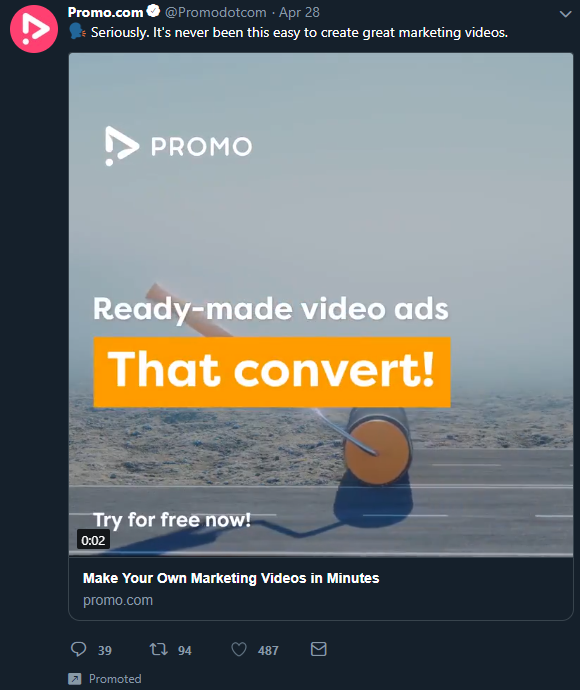
This promoted tweet (appropriately featuring a clip about video marketing!) looks just like any other tweet in your timeline, but with the little “Promoted” tag at the bottom.
Earned Media
Earned media is publicity. This section of the PESO model™ includes all things relationship building, including with journalists, bloggers, influencers and other media sites. All the great results that you see and appreciate with video marketing strategies are seen and appreciated by other online publishers when they share your content. Pitching site owners and content managers high-quality videos that will appeal to their audience will be beneficial to both sides of the relationship.
Link building & SEO
According to research by Forrester, a video is 50 times more likely to appear on the first page of Google than a traditional page. The algorithm has updated over time to favor visual content and has begun to include video results at the top of SERPs as the search engine has evolved.
Search engine optimization and a strong linking strategy are two components to earned media — gaining online coverage also gives a brand a backlink, which in turns boosts credibility and authority. Today’s PR work should include traditional outreach and earned media tactics, all done through the lens of digital marketing.
Guest blogging
One last way to share your branded videos via earned media is to write guest posts for other blogs or to post articles on self-publishing websites like Medium.
Creating this content for other publishers can help boost your thought leadership and earn implied authority for being connected to these sites, but it’s also one more way to get your video in front of another audience.
Putting it all together
The PESO™ marketing model is a holistic one — one section leads to another, and the best way to have a fully formed and successful strategy is combining all four sides into one. While one aspect of this strategy may be beneficial on its own, the best results come from putting it all together into one multifaceted, powerful campaign.
Need help putting all of this into action? Contact us and let us know what type of results you’re looking for — we’d love to hear about your brand!





